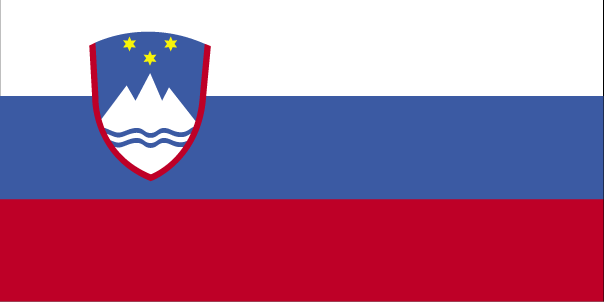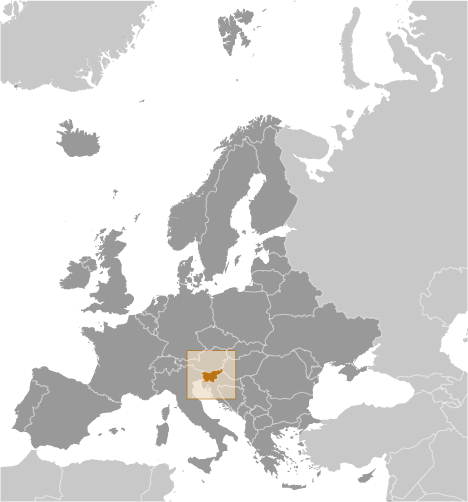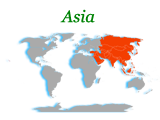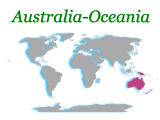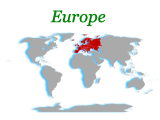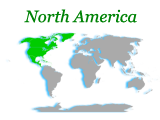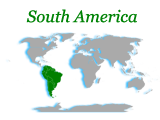The Slovene lands were part of the Austro-Hungarian Empire until the latter's dissolution at the end of World War I. In 1918, the Slovenes joined the Serbs and Croats in forming a new multinational state, which was named Yugoslavia in 1929. After World War II, Slovenia became a republic of the renewed Yugoslavia, which though Communist, distanced itself from Moscow's rule. Dissatisfied with the exercise of power by the majority Serbs, the Slovenes succeeded in establishing their independence in 1991 after a short 10-day war. Historical ties to Western Europe, a strong economy, and a stable democracy have assisted in Slovenia's transformation to a modern state. Slovenia acceded to both NATO and the EU in the spring of 2004.
Country Name
Conventional long form:Republic of Slovenia
Conventional short form:Slovenia
Local long form:Republika Slovenija
Local short form:Slovenija
Former:People's Republic of Slovenia, Socialist Republic of Slovenia
Government Type
parliamentary republic
Capital
Name:Ljubljana
Geographic coordinates:46 03 N, 14 31 E
Time difference:UTC+1 (6 hours ahead of Washington, DC during Standard Time)
daylight saving time: +1hr, begins last Sunday in March; ends last Sunday in October
Administrative divisions
182 municipalities (obcine, singular - obcina) and 11 urban municipalities* (mestne obcine, singular - mestna obcina) Ajdovscina, Beltinci, Benedikt, Bistrica ob Sotli, Bled, Bloke, Bohinj, Borovnica, Bovec, Braslovce, Brda, Brezice, Brezovica, Cankova, Celje*, Cerklje na Gorenjskem, Cerknica, Cerkno, Cerkvenjak, Crensovci, Crna na Koroskem, Crnomelj, Destrnik, Divaca, Dobje, Dobrepolje, Dobrna, Dobrova-Horjul-Polhov Gradec, Dobrovnik-Dobronak, Dolenjske Toplice, Dol pri Ljubljani, Domzale, Dornava, Dravograd, Duplek, Gorenja Vas-Poljane, Gorisnica, Gornja Radgona, Gornji Grad, Gornji Petrovci, Grad, Grosuplje, Hajdina, Hoce-Slivnica, Hodos-Hodos, Horjul, Hrastnik, Hrpelje-Kozina, Idrija, Ig, Ilirska Bistrica, Ivancna Gorica, Izola-Isola, Jesenice, Jezersko, Jursinci, Kamnik, Kanal, Kidricevo, Kobarid, Kobilje, Kocevje, Komen, Komenda, Koper-Capodistria*, Kostel, Kozje, Kranj*, Kranjska Gora, Krizevci, Krsko, Kungota, Kuzma, Lasko, Lenart, Lendava-Lendva, Litija, Ljubljana*, Ljubno, Ljutomer, Logatec, Loska Dolina, Loski Potok, Lovrenc na Pohorju, Luce, Lukovica, Majsperk, Maribor*, Markovci, Medvode, Menges, Metlika, Mezica, Miklavz na Dravskem Polju, Miren-Kostanjevica, Mirna Pec, Mislinja, Moravce, Moravske Toplice, Mozirje, Murska Sobota*, Muta, Naklo, Nazarje, Nova Gorica*, Novo Mesto*, Odranci, Oplotnica, Ormoz, Osilnica, Pesnica, Piran-Pirano, Pivka, Podcetrtek, Podlehnik, Podvelka, Polzela, Postojna, Prebold, Preddvor, Prevalje, Ptuj*, Puconci, Race-Fram, Radece, Radenci, Radlje ob Dravi, Radovljica, Ravne na Koroskem, Razkrizje, Ribnica, Ribnica na Pohorju, Rogasovci, Rogaska Slatina, Rogatec, Ruse, Salovci, Selnica ob Dravi, Semic, Sempeter-Vrtojba, Sencur, Sentilj, Sentjernej, Sentjur pri Celju, Sevnica, Sezana, Skocjan, Skofja Loka, Skofljica, Slovenj Gradec*, Slovenska Bistrica, Slovenske Konjice, Smarje pri Jelsah, Smartno ob Paki, Smartno pri Litiji, Sodrazica, Solcava, Sostanj, Starse, Store, Sveta Ana, Sveti Andraz v Slovenskih Goricah, Sveti Jurij, Tabor, Tisina, Tolmin, Trbovlje, Trebnje, Trnovska Vas, Trzic, Trzin, Turnisce, Velenje*, Velika Polana, Velike Lasce, Verzej, Videm, Vipava, Vitanje, Vodice, Vojnik, Vransko, Vrhnika, Vuzenica, Zagorje ob Savi, Zalec, Zavrc, Zelezniki, Zetale, Ziri, Zirovnica, Zuzemberk, Zrece
note: the Government of Slovenia has reported 210 municipalities
Independence
25 June 1991 (from Yugoslavia)
National Holiday
Independence Day/Statehood Day, 25 June (1991)
Constitution
adopted 23 December 1991, amended 14 July 1997 and 25 July 2000
Legal system
based on civil law system; has not accepted compulsory ICJ jurisdiction
Suffrage
18 years of age, 16 if employed; universal
Executive branch
Chief of state: President Danilo TURK (since 22 December 2007)
Head of government:Prime Minister Borut PAHOR (since 7 November 2008)
Cabinet:Council of Ministers nominated by the prime minister and elected by the National Assembly
(For more information visit the World Leaders website)
Elections:president elected by popular vote for a five-year term (eligible for a second term); election last held on 21 October and 11 November 2007 (next to be held on 8 October 2012); following National Assembly elections, the leader of the majority party or the leader of a majority coalition usually nominated to become prime minister by the president and elected by the National Assembly; election last held on 21 September 2008 (next National Assembly elections to be held in 8 October 2012)
Election results:Danilo TURK elected president; percent of vote - Danilo TURK 68.2%, Alojze PETERLE 31.8%; Borut PAHOR elected prime minister by National Assembly vote
Legislative branch
bicameral Parliament consists of a National Council or Drzavni Svet (40 seats; members indirectly elected by an electoral college to serve five-year terms; note - this is primarily an advisory body with limited legislative powers; it may propose laws, ask to review any National Assembly decision, and call national referenda) and the National Assembly or Drzavni Zbor (90 seats; 40 members directly elected and 50 are elected on a proportional basis; note - the number of directly elected and proportionally elected seats varies with each election; the constitution mandates 1 seat each for Slovenia's Hungarian and Italian minorities; members elected by popular vote to serve four-year terms)
Elections: National Assembly - last held on 21 September 2008 (next to be held on 8 October 2012)
Election results:percent of vote by party - SD 30.5%, SDS 29.3%, ZARES 9.4%, DeSUS 7.5%, SNS 5.5%, SLS+SMS 5.2%, LDS 5.2%, other 7.4%; seats by party - SD 29, SDS 28, ZARES 9, DeSUS 7, SNS 5, SLS+SMS 5, LDS 5, Hungarian minority 1, Italian minority 1
Judicial branch
Supreme Court (judges are elected by the National Assembly on the recommendation of the Judicial Council); Constitutional Court (judges elected for nine-year terms by the National Assembly and nominated by the president)
Political Parties and Leaders
Democratic Party of Pensioners of Slovenia or DeSUS [Karl ERJAVEC]; Liberal Democracy of Slovenia or LDS [Katarina KRESAL]; New Slovenia or NSi [Ljudmila NOVAK (acting)]; Slovene National Party or SNS [Zmago JELINCIC]; Slovene People's Party or SLS [Radovan ZERJAV]; Slovene Youth Party or SMS [Darko KRANJC]; Slovenian Democratic Party or SDS [Janez JANSA]; Social Democrats or SD [Borut PAHOR] (formerly ZLSD); ZARES [Gregor GOLOBIC]
Political pressure groups and leaders
Slovenian Roma Association [Jozek Horvat MUC]
Other:Catholic Church
International organization participation
Australia Group, BIS, CE, CEI, EAPC, EBRD, EIB, EMU, ESA (cooperating state), EU, FAO, IADB, IAEA, IBRD, ICAO, ICC, ICCt, ICRM, IDA, IFC, IFRCS, IHO, ILO, IMF, IMO, Interpol, IOC, IOM, IPU, ISO, ITU, MIGA, NATO, NSG, OAS (observer), OECD (accession state), OIF (observer), OPCW, OSCE, PCA, Schengen Convention, SECI, UN, UNCTAD, UNESCO, UNIDO, UNIFIL, UNTSO, UNWTO, UPU, WCO, WFTU, WHO, WIPO, WMO, WTO, ZC
Diplomatic representation in the US
Chief of mission:Ambassador Roman KIRN
Chancery: 2410 California Street N.W., Washington, DC 20008
Telephone: [1] (202) 386-6601
FAX:[1] (202) 386-6633
Consulate(s) general:Cleveland, New York
Diplomatic representation from the US
Chief of mission:Ambassador (vacant); Charge d'Affaires Bradley FREDEN
Embassy:Presernova 31, 1000 Ljubljana
Mailing address:American Embassy Ljubljana, US Department of State, 7140 Ljubljana Place, Washington, DC 20521-7140
Telephone:[386] (1) 200-5500
FAX:[386] (1) 200-5555
Flag description
three equal horizontal bands of white (top), blue, and red, derive from the medieval coat of arms of the Duchy of Carniola; the Slovenian seal (a shield with the image of Triglav, Slovenia's highest peak, in white against a blue background at the center; beneath it are two wavy blue lines depicting seas and rivers, and above it are three six-pointed stars arranged in an inverted triangle, which are taken from the coat of arms of the Counts of Celje, the great Slovene dynastic house of the late 14th and early 15th centuries) appears in the upper hoist side of the flag centered on the white and blue bands
